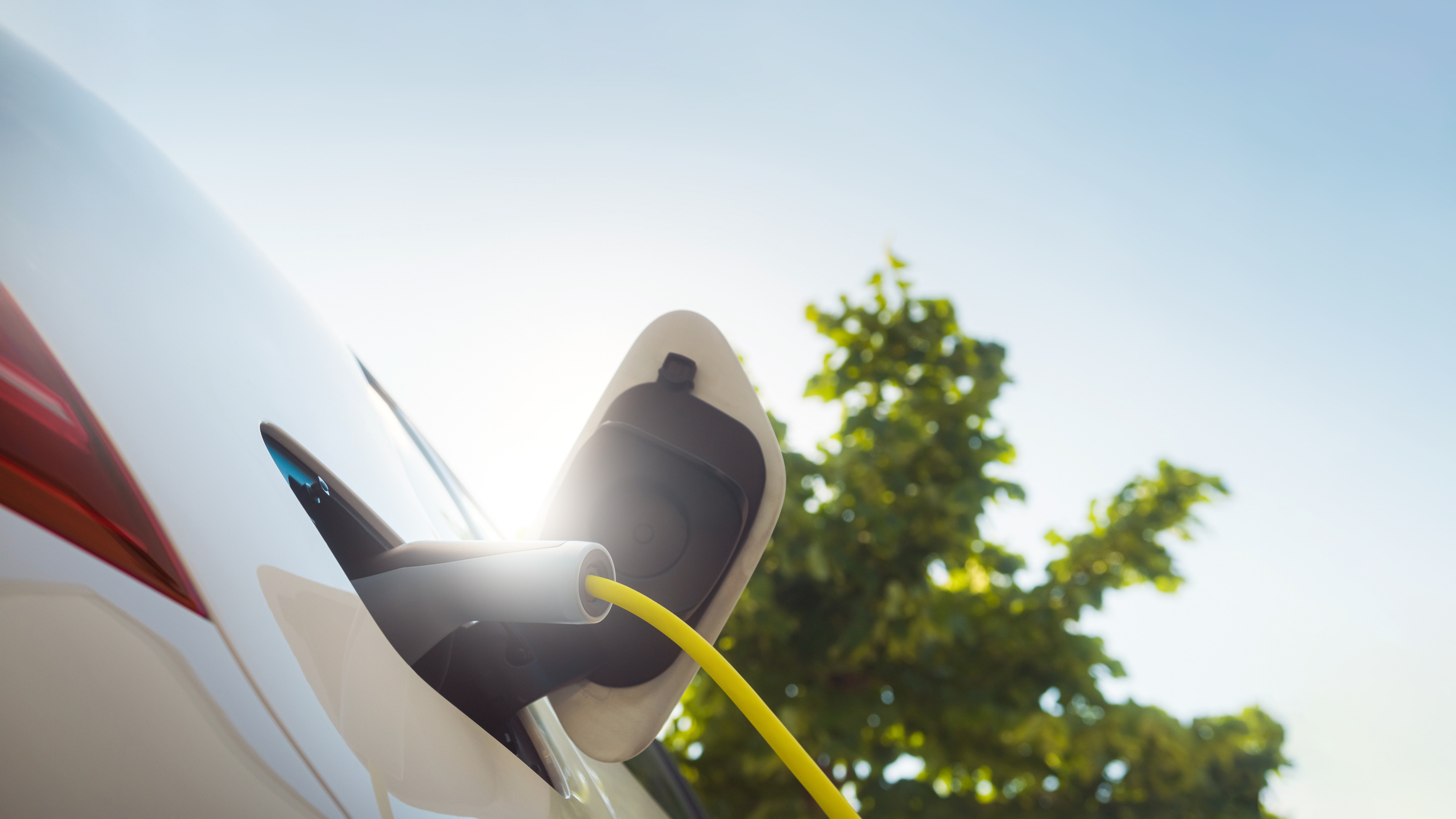
As the electric vehicle (EV) market continues to expand, the demand for more efficient charging solutions becomes paramount. DC fast charging technology emerges as a cornerstone for modern EV infrastructure by providing the speed and convenience necessary to support a growing fleet of electric cars. These chargers are capable of delivering a significant charge to an EV’s battery in less than half an hour, presenting a practical solution for drivers on the go.
The widespread deployment of DC fast charging stations is a critical factor in overcoming one of the major barriers to EV adoption—range anxiety. By enabling faster charging times, these stations allow drivers to travel longer distances with shorter stops, making electric vehicles more appealing for both daily commutes and long-distance travel. The rapid replenishment of battery power ensures that EVs can meet a broader range of transportation needs, paralleling the convenience of traditional fueling stations.
Investments in DC fast charging infrastructure are accelerating globally, supported by both governmental policies and private sector initiatives. These efforts aim not only to enhance the current capabilities of electric vehicles but also to future-proof the technology for upcoming innovations in battery and automotive design. As such, the development of DC fast chargers is not just about keeping pace with the present but also about driving forward the future of transportation.
The Technology Behind DC Fast Chargers
DC fast chargers operate by delivering a direct current (DC) directly to an electric vehicle’s battery, bypassing the vehicle’s onboard converter. This method allows for much faster charging speeds than those achievable with standard AC (Alternating Current) charging systems. Typically, these units range from 50 kW to 350 kW, enabling them to charge a vehicle’s battery to 80% in as little as 20 minutes.
The efficiency of DC fast charging is heavily reliant on the evolution of battery technology. Modern electric vehicles are equipped with batteries that can accept higher rates of power input without degrading battery health, a crucial aspect of making fast charging viable. Thermal management systems within these batteries also play a critical role, as they help maintain optimal temperatures during fast charging sessions, thereby ensuring both safety and longevity of the battery.
High-power chargers require robust infrastructure, including substantial electrical inputs and advanced safety mechanisms. These chargers are integrated with smart technology that monitors the charging process, adjusting power output and balancing loads to optimize the charging session. Safety features are also sophisticated, designed to detect any electrical faults and disconnect power instantaneously to prevent damage to the vehicle or harm to the user.
Compatibility and Standardization
The landscape of DC fast charging is marked by a variety of connectors and standards, reflecting the diverse approaches of vehicle manufacturers. The main standards include the Combined Charging System (CCS), CHAdeMO, and Tesla’s Supercharger network. While this diversity fosters innovation, it also poses challenges for universal access as drivers must locate compatible stations.
To address these challenges, there is a growing push towards standardization across the industry. Automakers and charging infrastructure providers are collaborating to harmonize charging systems, which would allow any electric vehicle to charge at any station, increasing the usability of each charger and ensuring a smoother user experience. Standardization efforts are crucial for creating an interconnected and efficient charging network that can support the increasing number of EVs on the road.
Innovative companies like ChargeTronix are leading the way in integrating advanced functionalities into their charging systems. ChargeTronix distinguishes itself with chargers that are not only robust and powerful but also highly customizable. This adaptability ensures that regardless of the vehicle or the specific needs of their clients, their charging solutions provide reliability and efficiency. Such attributes make ChargeTronix an invaluable partner in the EV charging market, helping to push the boundaries of what is possible with DC fast charging technology.
Strategic Placement of Charging Stations
The effectiveness of DC fast charging networks depends significantly on the strategic placement of charging stations. Optimal locations for these chargers include urban centers, malls, restaurants, and along major highways. These sites provide convenient access for EV drivers who need quick charging, and they often have the necessary infrastructure to support the high power requirements of DC fast chargers.
Urban planners and private companies consider several factors when deciding where to install these chargers. These include local traffic patterns, proximity to the electrical grid, and potential for future growth. By placing chargers in locations that are both highly accessible and visible, stakeholders can not only encourage EV adoption but also facilitate a smoother integration of electric vehicles into the daily lives of drivers.
Moreover, the location of these chargers can influence consumer behavior. Placing DC fast chargers at shopping centers or entertainment complexes can encourage drivers to charge their vehicles during routine activities, such as shopping or dining out. This not only makes using an EV more convenient but also adds a layer of routine that can accelerate the normalization of electric vehicle use in everyday life.
Economic and Environmental Impacts
The expansion of DC fast charging stations has significant economic implications. For businesses, investing in charging infrastructure can attract a growing demographic of EV owners and enhance customer loyalty by aligning with environmental sustainability goals. This investment also often leads to increased dwell time as drivers wait for their vehicles to charge, boosting potential revenue for nearby businesses. On a broader scale, the burgeoning charging network is catalyzing job creation in technology, installation, maintenance, and operational sectors related to electric vehicle services.
From an environmental standpoint, the accelerated adoption of electric vehicles facilitated by DC fast charging contributes substantially to the reduction of greenhouse gas emissions. As more EVs replace traditional combustion engine vehicles, the overall impact on air quality and carbon output is markedly positive. This shift not only helps cities meet stringent environmental targets but also promotes a healthier, more sustainable atmosphere for future generations.
Moreover, integrating renewable energy sources with DC fast charging infrastructure can further enhance the environmental benefits. Solar-powered charging stations, for example, leverage clean energy directly for EV charging, reducing reliance on fossil-fueled electricity. This synergy between renewable energy and electric vehicle charging is a crucial step towards achieving a zero-emission transportation ecosystem.
Consumer Perspectives and Market Trends
Consumer acceptance of DC fast charging is growing as the technology becomes more widespread and accessible. User experience improvements, such as reduced waiting times and more user-friendly interfaces, have made fast charging more appealing. Moreover, as the cost of EVs continues to decrease and the availability of fast charging expands, more consumers are considering electric vehicles as a viable alternative to traditional cars.
Market trends indicate a sharp increase in the deployment of DC fast chargers globally, driven by consumer demand and supportive regulatory frameworks. Governments around the world are implementing incentives for EV purchases and the construction of charging infrastructure, which further stimulates the market. The evolving landscape of electric mobility is seeing traditional automakers and new entrants alike invest heavily in the development of electric vehicles and their associated charging technologies.
The feedback from EV users about their charging experiences also shapes the ongoing development of DC fast charging technology. As users highlight the importance of factors such as charger availability, reliability, and speed, providers are incentivized to innovate and improve their offerings. This consumer-driven evolution is crucial for fine-tuning the technology and ensuring that it meets the real-world needs of EV drivers.
Challenges and Future Directions
Despite the rapid advancement and adoption of DC fast charging, several challenges remain. These include the high costs associated with installing and maintaining high-power charging stations, technological hurdles related to grid integration, and the ongoing need for technological advancement to keep pace with increasingly sophisticated EV batteries.
Future directions in DC fast charging technology focus on overcoming these challenges through innovation in charger design, smarter grid integration, and better battery technology. Efforts are also being made to enhance the efficiency of charging processes, reduce costs, and expand the network in underserved areas. These improvements are crucial for supporting the next wave of electric vehicle adoption and ensuring that the infrastructure is robust enough to handle it.
As battery technology continues to evolve, there is a potential shift towards even faster charging solutions that could rival the time it takes to refuel a traditional car. The exploration of ultra-fast charging technologies and the development of batteries capable of handling these higher power levels without degrading are at the forefront of research in the field.
Final Thoughts
DC fast charging is a transformative technology that plays a vital role in the global shift towards electric mobility. By providing rapid charging solutions, this technology is breaking down the barriers to EV adoption and paving the way for a more sustainable automotive future. As the technology continues to improve and expand, it will remain a critical component of the infrastructure needed to support the next generation of electric vehicles.
As stakeholders continue to refine and deploy DC fast charging capabilities, the potential for electric vehicles to become a dominant force in the transportation sector grows increasingly attainable. This not only promises a cleaner, more sustainable environment but also heralds a new era in automotive technology, characterized by innovation and driven by an unwavering commitment to environmental stewardship and consumer satisfaction.





